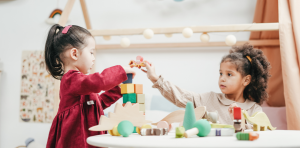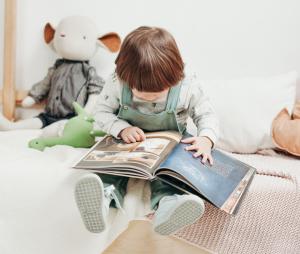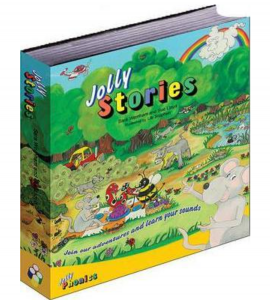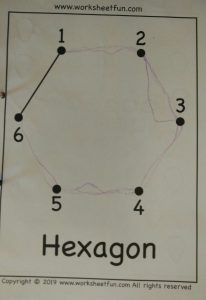Hello to my fellow Aucklanders still contending with lockdown (and to anyone else in New Zealand or around the world who is currently embracing the challenge of educating your children at home). The resources in this post are directed towards parents with children 3+ years old who are beginning to learn basic literacy and numeracy at home.
Over the past year and a half, since lockdowns began here in New Zealand, I have been keenly looking for helpful resources and learning strategies for my preschooler to insure they receive a well rounded preschool education. To date, I have learned that it’s not hard to educate children at home as long as you have a plan and the right resources on hand to equip you, the parent, to carry out that plan.
Fortunately, there are a lot of resources out there to choose from, with the only downside being, how do you choose? Well, that’s up to you, but hopefully this post will give you a good starting point.
First off, it can be helpful to define your goals. My teaching goals at present are:
1) Learning effective verbal communication.
2) Learning about the world in which we live.
3) Learning to read.
4) Learning to count and understand the value of numbers.
Learning effective verbal communication
The key strategies for developing effective verbal communication are…
1) Read, read, read! Reading books is a great way to keep children (most children) entertained and quiet, spend some quality time with them, develop their communication skills, increase their vocabulary, and get them to sleep! 🙂
2) Talk to your children. Talk to them about what you are doing, where you are going, what happened, and what may happen next.
3) Listen to your children. It can take a child ten times longer than us to verbalize their thoughts and they need patience on our part to get the words out. Repeat back to them what you think they said and they’ll either tell you you’ve got it right or the two of you will begin the process all over again. Remember to be calm and patient and take your time; this is both a learning and bonding moment.
Learning about the world in which they live
Learning about their home, community, world, and what each of these environments has to offer and expects of the child is a very important aspect of the child’s development. The way we as parents approach each of these topics will be very individual, but will always required effective communication from we (the parents) and resources of various descriptions.
The main resources I use are books (picture books, text only, encyclopedia, Picture dictionary, etc.), age appropriate documentaries that I get off the internet (usually YouTube) or have on DVD, and interaction with the wider environment depending on what is available or appropriate (currently this is limited to our family bubble, local nature walks at the park, beach and round the block, video calls with extended family, and socially distant hellos from neighbors). We spend quite a bit of time watching and discussing the weather and talking about the birds in our area. Pet’s and gardens are also a great learning resources, we grow a few fruits and vegetables, and keep some chickens and bunny rabbits. Hatching eggs in an incubator, growing tadpoles into frogs, and eating veges from their own little garden/pot are all awesome experience for young children.
Learning to read
For this task I have settled on the Jolly Phonics program. Which is based on the phonics method of learning the 42 sounds of the English language.
There are several reasons I like the Jolly Phonics program, firstly, it does not require a large amount of material; unless you want to buy their whole kit which will set you back several hundred dollars. The way I tech Jolly Phonics is with the songs (which I learned of YouTube), the sound actions (which I learned of YouTube), the mini flashcards (which I printed of the internet), the worksheets (which I print of the internet), and the absolutely awesome ‘Jolly Stories‘ book by Sara Wernham and Sue Lloyd which contains everything you need to teach the 42 sounds of the English language.
Secondly, the Jolly Phonics program is very simple and easy to follow, especially with the ‘Jolly Stories’ book (which you don’t necessarily need in order to tech the Jolly Phonics method, but it does add to the learning experience).
Thirdly, it’s fun to teach and fun to learn. It is song and action based which makes it easier to remember. We do short lessons which consist of introducing the new sound (lowercase letter, sound, song, action) and then review the previously learned sounds. We finish off with a worksheet.
For those tech savvy parents, there is a Jolly Phonics App (available from the appstore) which I think costs around $10-$20, and you can get access to games and other activities too through the app.
I will write a separate post dedicated to Jolly Phonics shortly for those who want more details about this literacy program and where I got the resources from online.
Learning to count and understand the value of numbers
For this task I have not chosen any specific educational program we mostly just count objects while we play, do chores, and cook together. I also use counting and shape worksheets which I printout from the www.worksheetfun.com website.
Our favorite counting games are:
1) Counting the fish on our ocean flashcards as the child places a small block or button on top of each fish.
2) Stacking blocks as we count to see how high we can get our tower.
3) Counting wooden beads as the child threads them onto a shoe lace.
For those of you with older children who are looking for a good mathematics program I highly recommend the MATH-U-SEE curriculum. It comes with workbooks, teacher guides/manuals, DVD’s, maths blocks, and you can print out free test pages from their website too! Their program goes from preschool right up to highschool. The DVD’s cover everything necessary to understand the lessons and are taught by an experienced mathematics teacher. There are of course many other maths programs out there, but MATH-U-SEE is the best curriculum I’ve seen so far.
Thank you for reading. Please leave a comment and I hope you found this information helpful! God Bless 🙂





